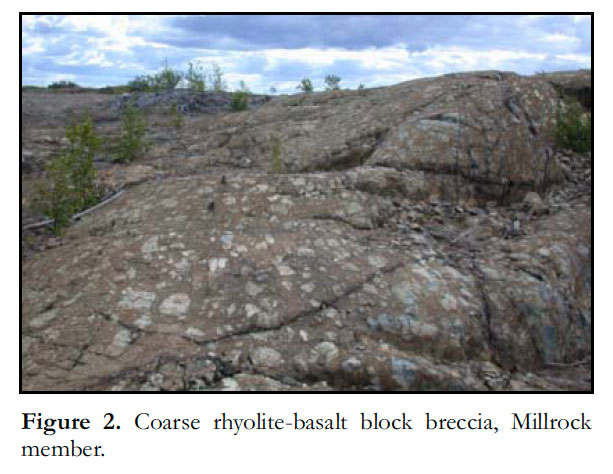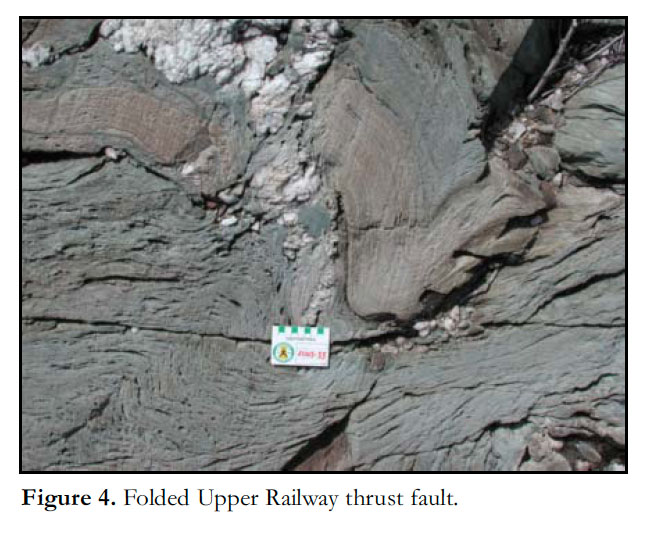GAC-MAC 2013: Field Guide Summary
The Volcanological and Structural Evolution of the Paleoproterozoic Flin Flon Mining District:
Anatomy of a Giant VMS System
FIELD TRIP OBJECTIVES
1 The world-class, Paleoproterozoic, Flin Flon volcanic-hosted massive sulphide (VMS) district contains the Flin Flon, Callinan and 777 VMS deposits, which along with HudBay Mineral’s smelter, sustains the communities of Creighton, Saskatchewan and Flin Flon, Manitoba. The Flin Flon VMS district is situated within the southwestern Trans-Hudson Orogen, the largest Paleoproterozoic orogenic belt of Laurentia. Using spectacular, clean and polished outcrops (Figs. 1-4), and underground exposures at HudBay’s 777 mine (Fig. 5), this field trip will: 1) place the Flin Flon District in the context of the tectonic and magmatic evolution of a juvenile rifted volcanic-arc volcano; 2) showcase the spectacular flow, volcaniclastic and intrusive lithofacies that comprise this largely basaltic volcanic edifice; 3) reconstruct the volcanic and structural architecture and history of the district, including a large, synvolcanic subsidence structure referred to as the Flin Flon cauldron that hosts the VMS deposits; 4) demonstrate how subsequent deformation events have modified this primary volcanic feature and its contained ore deposits; and 5) illustrate the role of volcanism and subsidence in the formation and location of VMS deposits, and the role of deformation in their modification.
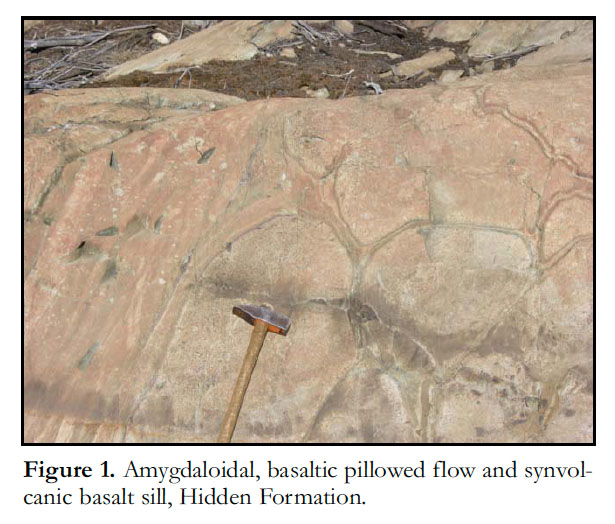 Display large image of Figure 1
Display large image of Figure 1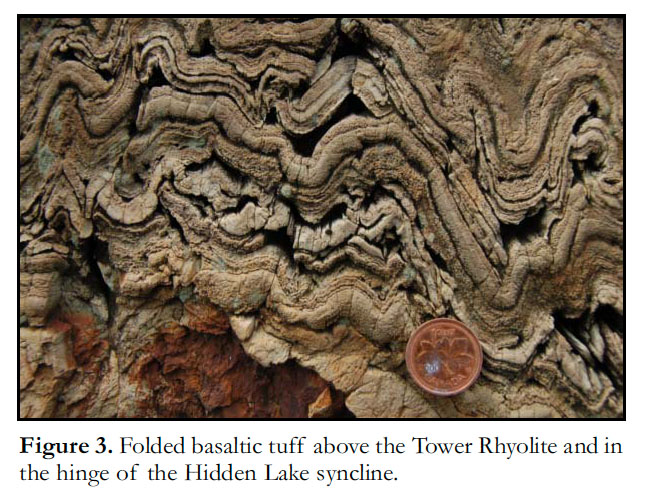 Display large image of Figure 3
Display large image of Figure 3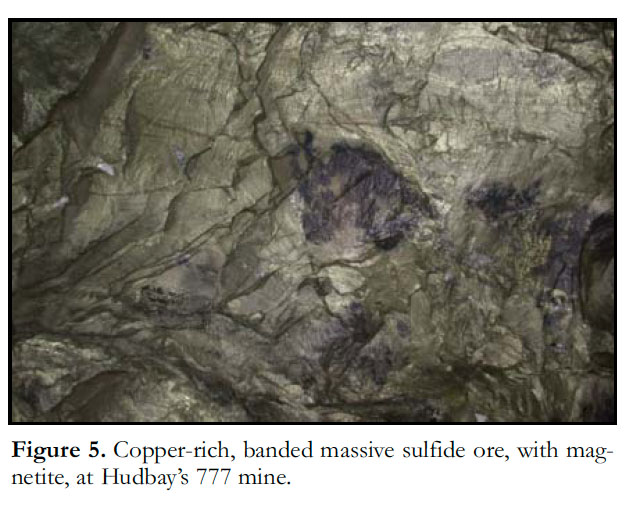 Display large image of Figure 5
Display large image of Figure 52 This field trip will draw on the results of research conducted over the past decade by the Manitoba and Saskatchewan geological surveys, Natural Resources Canada (Targeted Geoscience Initiative 1 and 3 programs), the Natural Sciences and Engineering Research Council (NSERC), Laurentian and Mount Royal Universities, and HudBay Minerals Inc. The field trip is an outgrowth of these collective efforts and presents a significant new interpretation of the volcanic and structural control of the deposits that will be useful to researchers and explorationists in VMS terranes of any era.
OTHER INFORMATION
3 Most of the out-crops are accessible by road, but the trip will involve some hiking (~1 km) over moderately rugged topography. The outcrop surfaces are extremely slippery when wet. Parts of the field trip surface tour take place on the mine property of HudBay Minerals Inc. This area is restricted to the public and entrance to the property requires the permission of HudBay, and compulsory attendance at a safety/orientation course. Participants must bring sturdy safety-toed boots, and a hard hat and safety glasses if possible. Participants going underground at the 777 mine require fit testing for a respirator. They must be clean shaven to pass the respirator fit test, and without this test they will not be allowed underground.
